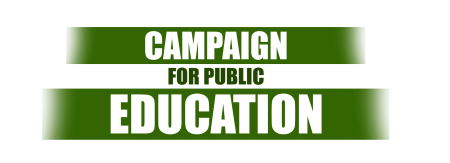devolution by June or we’ll impose
'For 10 years, there's been a feeling that the board hasn't come together' Education Minister KATHLEEN WYNNE
Make suggestions for devolution by June or we'll impose changes, ministry tells Toronto mega-board
Toronto Star Mar 31, 2008 Kristin Rushowy Education Reporter
Toronto trustees have two more months to figure out a way to create a better school board – possibly by breaking it into smaller pieces – or Education Minister Kathleen Wynne will do it for them.
"The minister will consider changes to the TDSB's governance by the end of May, whether or not the board brings recommendations," says a document prepared for discussion at a committee meeting today at Toronto District School Board.
"Her strong preference is to work with the board in considering changes."
In an interview, Wynne said the May date is more a "timeline" than an ultimatum for the board to reach a decision on which direction it's moving in.
"I had said to (trustees) in January that we needed to move on this," Wynne said.
"What (the deadline) says is, I really want them to come together and try to form some kind of consensus.
"If not, then we'll have to consider without them."
The ministry says the board should consider either decentralizing its authority to "local councils or committees," or some form of de-amalgamation that would involve two or more boards based on geography, says the document, based on a March 19 meeting with Ken Thurston, a senior Wynne adviser.
The ministry has told trustees the status quo is not an option, nor is a system based on party politics.
Board chair John Campbell said yesterday while identifying decentralization or de-amalgamation as the most likely scenarios, the ministry did not do a thorough analysis of the implications, especially financial.
He wants the board given more time to prove itself, saying that with a new slate of trustees aboard and a director to be hired, things are changing.
"I can make a solid argument that the board is headed in the right direction," he said. "In the next 12 months, I think you'd see the board move in a fairly significant, positive way."
Campbell said the board's governance committee will continue to discuss scenarios and seek input internally, saying the May deadline would not be difficult to meet.
However, a lot of trustees may still not have a "very good understanding of what the repercussions might be" in terms of changes to the board or missing the deadline, he said.
In a report last week, the ministry called the Toronto board "unique" because of its size – the largest in Canada and the fifth-largest in North America – while noting the "strong and differing cultures of the TDSB's legacy boards" make for a difficult fit within one mega-board.
The report also noted that Toronto is among the bottom five of 72 boards across Ontario in terms of improving standardized testing scores over the past five years.
"The concern is that in terms of the rest of the boards in the province, Toronto has not improved as quickly," said Wynne.
"The reality is that for 10 years, there's been a feeling that the board hasn't come together" properly, the minister said.
"Better student success will flow from an organization that is more cohesive, that is more nimble."
The board's sheer size works against responding "in an agile way to changing circumstances," while the communities being served are so different that "it makes decision-making difficult. I know (this) from personal experience," said Wynne, who began her political career at the Toronto board.
"We need a way to reintroduce smallness into this system."
The board was created 10 years ago by the Mike Harris government by assembling the seven boards in the old Metro Toronto.
The ministry's reportsays the Toronto board pays "too much attention to operational issues" and not enough to long-term goals, and cites "long, ineffective board meetings."
With 270,000 students in 560 schools, Toronto is double the size of the ideal school board, according to expert research.
The report lays out two general options: community-sized wards or de-amalgamation into two or four boards.
The first model could mean:
* Continuing with one mega-board while introducing wards for Etobicoke-York, North York, Toronto-East York, and Scarborough; the wards' power to be determined.
* Each ward could have a board of a half-dozen trustees and its own director of education. The trustees would also sit on the central board, which could set umbrella policies and administer staff.
* De-amalgamation of the board into smaller boards could mean one of two things:
* Two separate boards: west with 304 schools and 121,330 students; east with 291 schools and 124,294 students.
* Or four boards: northwest with 141 schools; northeast, 159 schools; southwest, 163 schools; and southeast, 132 schools.
Trustee Mari Rutka has called the board "Frankenstein's monster" and Gerri Gershon noted its size makes it tough to grasp the budget.

